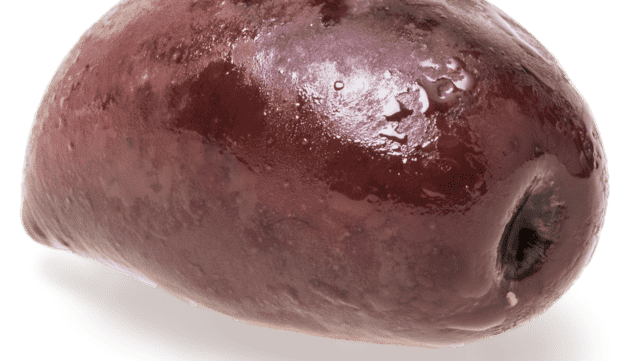Shopping Note
We’ve found that pitted olives are inferior to unpitted ones. After pitting, the olives are returned to the brine for packing. The brine can penetrate the inside of the olive and turn it mushy as well as increase the absorption of salt. That saltier taste can mask subtler flavors. If you have the time, buy unpitted olives and pit them yourself.Our Favorite Black Olives
Published May 29, 2019.

If you were to bite into a raw olive plucked right off the tree, you’d cringe at the profound bitterness that comes from a compound called oleuropein. Oleuropein exists in the fruit as a protective agent against predators. Only once olives are cured do they shed their bitterness (curing draws out the oleuropein and converts the olives’ natural sugars into lactic acid) and take on those aforementioned appealing olive-y qualities.
The particular curing agent—brine, dry salt, or lye—largely determines the flavor and texture of a cured olive; other factors include genetic makeup, climate, and degree of ripeness when harvested. (Ripeness, not variety, actually determines olive color, too; all olives start out green and darken as they ripen to shades ranging from dark purple to jet black.) Brine- and salt-cured (often misleadingly labeled “oil-cured”) olives are the most common, and in a well-stocked market you’ll find multiple varieties of both. Here are six of our favorites.

Kalamata
Grown in: Greece
Curing method: Brine
Profile: Meaty, bright, earthy, floral

Alfonso
Grown in: Peru
Curing method: Brine, then steeped in either wine or red wine vinegar
Profile: Plump, very soft, juicy, tangy, winey

Niçoise
Grown in: France
Curing method: Brine; often stored with herbs
Profile: Soft, sweet, earthy, slightly smoky; low flesh-to-pit ratio

Gaeta
Grown in: Italy
Curing method: Dry salt or brine, then dipped in oil
Profile: Bitter, buttery, fruity

Ligurian (Taggiasca)
Grown in: Italy
Curing method: Brine; often stored with herbs
Profile: Meaty, smoky, lightly salty

Nyon
Grown in: France
Curing method: Dry salt, then soaked in olive oil or brine to rehydrate
Profile: Leathery, earthy, salty; intense coffee-like bitterness




